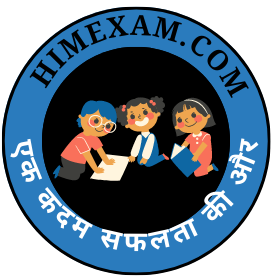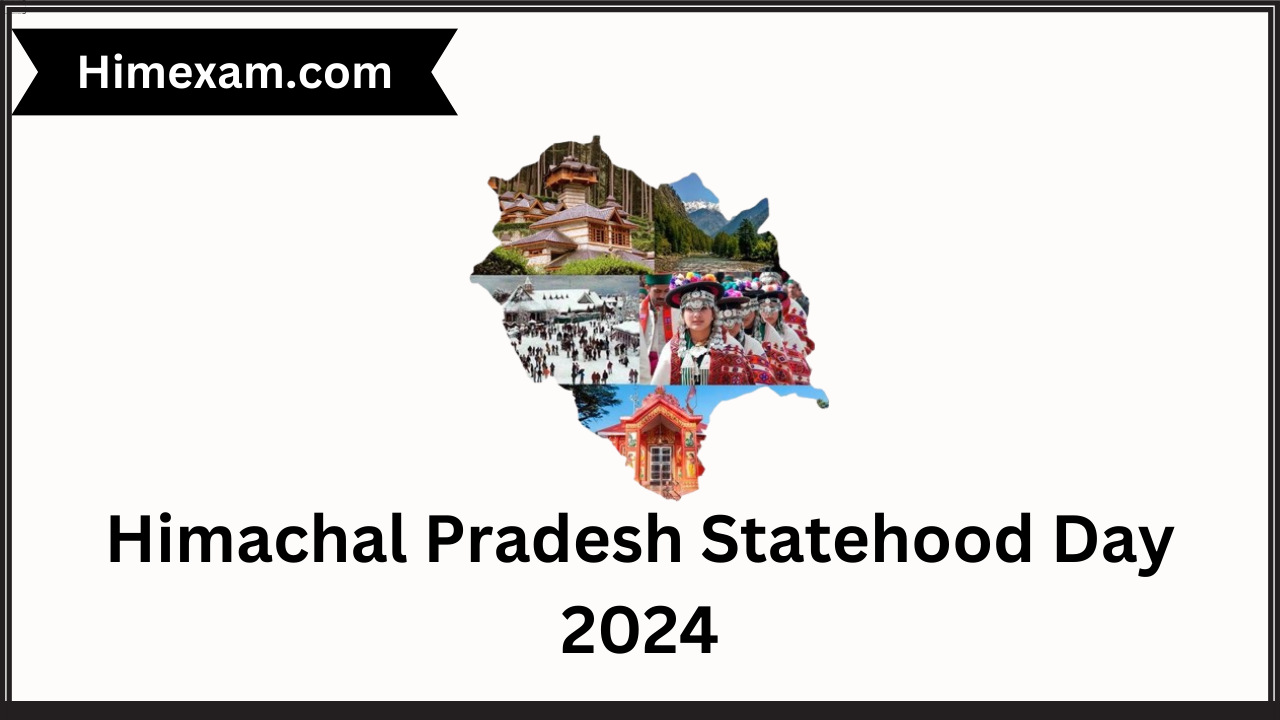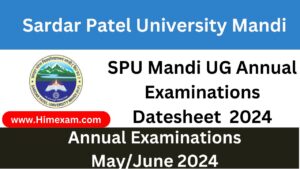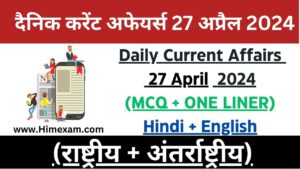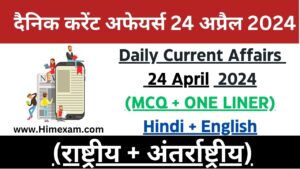Himachal Pradesh Statehood Day 2024
पूर्ण राज्य की प्राप्ति (25 जनवरी, 1971)-
24 जनवरी, 1968 की हि.प्र. विधानसभा ने सर्वसम्मति से प्रस्ताव पास कर हि.प्र. को पूर्ण राज्य का दर्जा देने की मांग की। 31 जुलाई, 1970 को हि.प्र. को पूर्ण राज्यत्व देने का प्रस्ताव संसद के समक्ष प्रस्तुत हुआ। 18 दिसम्बर, 1970 को-2 तहसील (शिमला, कण्डाघाट), 1 उप-तहसील (नालागढ़) जिला लाहौल-स्पीति-2 तहसील (लाहौल और स्पीति)।”हि.प्र. राज्य अधिनियम” भारतीय संसद से सर्वसम्मति से पारित हो गया, प्रधानमंत्री श्रीमती इंदिरा गाँधी ने शिमला के रिज मैदान पर हि.प्र. को देश का 18वाँ राज्य बनने की घोषणा की। 25 जनवरी, 1971 को हिमाचल प्रदेश देश का 18वाँ पूर्ण राज्य बना और डॉ. यशवंत सिंह परमार पूर्ण राज्य के पहले मुख्यमंत्री बने। 25 जनवरी, 1971 को हिमाचल को पूर्ण राज्य का दर्जा मिलने के बाद एस. चक्रवर्ती हिमाचल प्रदेश के प्रथम राज्यपाल (गर्वनर) बने। पूर्ण राज्य प्राप्ति के बाद देशराज महाजन विधानसभा अध्यक्ष बने। इस बार प्रदेश 54वें पूर्ण राज्यत्व दिवस मनाएगा।
जिलों का पुनर्गठन (1972)-
पूर्ण राज्य बनने के समय हिमाचल प्रदेश में 10 जिले थे। 1972 में जिलों का पुनर्गठन किया गया। काँगड़ा जिले को विभाजित कर ऊना व हमीरपुर जिलों को बनाया गया, वहीं शिमला, महासू का पुनर्गठन कर शिमला व सोलन जिलों का निर्माण किया गया। आज हिमाचल प्रदेश में 12 जिले-चम्बा, सिरमौर, मण्डी, बिलासपुर, किन्नौर, काँगड़ा, कुल्लू, लाहौल-स्पीति, शिमला, सोलन, ऊना व हमीरपुर है। 1 सितम्बर, 1972 ई. को हि.प्र. में 35 तहसीलें और 9 उप-तहसीलें शामिल थीं। 1972 में जिलों की प्रशासनिक व्यवस्था
- जिला काँगड़ा-4 तहसीलें (काँगड़ा, पालमपुर, नूरपुर और देहरा गोपीपुर)
- जिला हमीरपुर-2 तहसीलें (हमीरपुर, बड़सर)
- जिला ऊना-1 तहसील (ऊना), 1 उप-तहसील (अम्ब)।
- जिला शिमला (महासू और शिमला जिले से)-6 तहसीलें (शिमला, ठियोग, रामपुर, चौपाल, जुब्बल और रोहणू)
- जिला सोलन ( महासू और शिमला जिले से)-4 तहसीलें (सोलन, अर्की, नालागढ़, कण्डाघाट)।
Himachal Pradesh Statehood Day 2024||HP Statehood Day 2024||
Formation Of Himachal Pradesh
On 15 August 1947 AD, the rulers of the hill states were freed from the slavery of the British government. But the slavery of the common people had not ended yet. The rule of the native kings continued. The struggle for the freedom of the subjects of the princely states continued. In the princely state of Sirmaur, the leaders of Prajamandal performed the ritual of hoisting the national tricolor in Nahan Nagar.
The merger of the princely state
The leaders of the Praja Mandal of Theog princely state forced Rana Karamchand to give up power. On 17 August 1947, the independent Theog democratic government was formed and handed over the reins of the state to the people. Surat Ram Prakash was made chief. Devi Das Musafir was made the cabinet secretary. Theog became the first Himachali princely state to be merged with the Indian Union. On the auspicious occasion of 15th August, processions were banned in the princely state of Mahlog at the earliest.
Suppression of Prajamandal workers by princely rulers
In the princely state of Suket, the repression of the workers of Prajamandal continued on this occasion. In the princely state of Mandi too, the agitators were being held captive. He also launched a vigorous movement to get rid of the princely repression affair of the princely state of Sirmaur. Many leaders including Shivanand Ramoul were taken prisoner. He was released in December 1947.At the same time, in the princely state of Jubbal, under the leadership of Bhagmal Sauhta, the members of Praja Mandal launched a strong movement against the princely https://himexam.com/wp-content/uploads/2021/12/Madhya-Pradesh-MP-PEB-Group-2-Sub-Group-4-Various-Post-Answer-Key-2021.jpgistration. As a result, the government of the king of Jubbal was shaken. Similarly, a representative government was formed in Jubbal under the leadership of Bhagmal Sauhta. The princely governments of Mandi and Suket did not want to democratize the https://himexam.com/wp-content/uploads/2021/12/Madhya-Pradesh-MP-PEB-Group-2-Sub-Group-4-Various-Post-Answer-Key-2021.jpgistration under any circumstances. The princely government of Suket also left no stone unturned in suppressing the agitators.
Baragaon Conference
On December 21, 1947, the conference of the “Himalayan Hill States Regional Council” was held in ‘Badagaon’, the capital of the princely state of Shangri. Council President Satyadev Bushhari presided over the conference. Many leaders of the state participated in this conference. In this convention, a demand was made from the central government to merge the princely state into a “Pahari Province” and the demand for the release of political prisoners in various princely states was also raised.
Himachal Pradesh Proposal
By the beginning of 1948 AD, the ongoing freedom struggle in the hill states had reached its climax. The subjects of the princely states were struggling to get freedom from the rule of foreign rulers. On January 4, 1948, a political conference was organized in Shimla. In this conference, the leaders of the Praja Mandal of the hill princely states participated, in this conference under the chairmanship of Radha Krishna of the princely state of Suket, a resolution was passed in favor of creating ‘Himalaya Province’. In this context, conferences were also held in Kotgarh Rampur. On January 25, 1948, a conference was held in Shimla under the chairmanship of Dr. Yashwant Singh Parmar. In which the resolution of ‘Himalaya Province’ was passed and condemned the princely union.
Solan Conference:
Raja Durga Singh of Baghat and Raja Joginder Sen of Mandi, after meeting Mahatma Gandhi in Delhi, called a meeting of the rulers of the hill states and the leaders of Praja Mandal on 26 January 1948 at Solan. Many leaders participated in this meeting. The assembly of these rulers and the leaders of Praja Mandal was named as “Representative Assembly”. Raja Durga Singh of Baghat was unanimously elected as the president of this assembly. Bhagmal Sauhta was declared the leader of the House and Mahavir was given the post of secretary.
Name “Himachal Pradesh” proposed
In this conference the proposals of “Himalayan Province” and “Princely Union” were considered. In the end, a proposal was also made to negotiate with the rulers and agitating leaders of other hill states like Chamba Mandi, Suket, Bilaspur, Sirmaur etc. to form a Pahari State Union. In this meeting, the proposed princely union was named “Himachal Pradesh”. On behalf of the kings this proposal was made by Kunwar Mohan Singh of the princely state of Baghal. In another proposal, a request was made to the State Ministry of the Central Government that the hill states of Punjab should also be merged with the proposed Himachal Pradesh and made a complete hill state.
“Negotiating Committee”
A “negotiating committee” was formed for the purpose of this work. In this committee, 8 members were included in this committee, Raja Durga Singh of Baghal, Bhagmal Sauhta of Jubbal, Thakur Sen Negi and Satyadev Bushhari of Bushahr, Kanwar Mohan Singh and Hira Singh Pal of Baghal etc. The work of this committee was to negotiate with other hill states and the State Ministry of the Government of India for the fulfillment of its purpose. In this meeting, it was decided to inform India about the existence of Himachal Pradesh by 1 March 1948.
|Formation Of Himachal Pradesh ||Formation Of HP in English||
Provisional Government:
There was a lot of difference of opinion among the agitating leaders within and outside the hill states about the future of the princely states. Member of the second group of Prajamandal “Himalayan Hill States Sub-Regional Council” P. Padmadev and Dr. Yashwant Singh Parmar were against the proposal of the princely union. Due to this factionalism, the Himalayan Hill States Sub-Regional Council weakened and the member leaders of that council also split between the two factions. In January 1948, a meeting was held in Shimla under the patronage of the All India States Vipul Conference. Dr. Yashwant Singh Parmar presided over this meeting and said that he would accept the union proposal only when the power is given in the hands of the people and “Himalaya Province” is formed by merging each of the states. This was not acceptable to the kings.
So Dr. Parmar went straight to Delhi and met Sardar Patel. This faction of Prajamandal insisted that all the princely states should be merged into the Indian Union. For this purpose, he established a “Himalaya Province Provisional Government” i.e. Provisional Government in Shimla, with Shivanand Ramaul as its chief. This group sent a message to the king of Suket that he should merge his princely state with the Indian Union within 48 hours, otherwise Satyagraha would be started against him.
Suket Satyagraha:
If the king of Suket was not ready to give up power, then P. The agitators under the leadership of Padmadev left for Suket. According to the schedule, on 16 February 1948, groups of Satyagrihis gathered at places like Tattapani, Karsog, Phirnu Bahna, Chaba, Jayadevi etc. On 18 February the Satyagrahis of Tattapani and Phirnu reached Karsog. In Karsog, the agitators imprisoned the Tehsildar and captured all government offices. On February 19, the procession of the agitators reached Pangana. Pandit Padma Dev, Shivanand Ramaul, Dr. Devendra Singh, Swami Purnanand, Sadaram Chandel Ratan Singh etc. Satyagraha reached Sundernagar, the capital of Suket, on 25 February 1948.
The army contingent of the princely state laid down its arms and Raja Laxman Singh went straight to Delhi. The agitators took control of the princely state. On the second day, on behalf of the Central Government, the Chief Commissioner of Jalandhar, Lieutenant General Nagesh Dutt and Dharamsal.
“All India Council of People’s States” Conference
On March 1, 1948, a conference of “All India Lok Rajya Parishad” was held in Patiala. In this conference, Dr. Parmar and Daulatram met President of Numbering Council, Dr. Pattabhisitaramaiah. After this, the leaders of the Padamji-Parmar faction met the officials of the Ministry of States in Delhi and discussed the future of the hill princely states with the central leaders. During this period, the leaders of the Sauhta-Bushhari faction and under the chairmanship of ruler Durga Singh kept discussing the proposal of Solan Sabha with the central leaders in Delhi.
On March 2, 1948 AD, the Ministry of States of the Government of India established Shimla and Punjab Hills States in Delhi. called a meeting of the rulers of In this conference, Raja Durga Singh of Baghat urged for the collective merger of the hill princely states into a separate province “Himachal Pradesh”. But the secretary of the ministry, C.C. Desai, opposed it. On this, the rulers left the meeting and on the second day the leaders of the Bhagmal-Bushhari faction of the princely states met the Home Minister Sardar Vallabhbhai Patel.
|Formation Of Himachal Pradesh ||Formation Of HP in English||
Approval for formation of Himachal Pradesh
He presented the proposal of Solan Sabha to Sardar Patel and appealed to him to approve the formation of a separate hilly province “Himachal Pradesh” by joining the hill states. After much consideration it was accepted. The rulers of the hill states signed the merger letter on this assurance. After that, on 8 March 1948 AD, the Secretary of the Minister of States has announced the creation of a separate Himachal Pradesh from the merger of the hill states on behalf of the Central Government. Thus on March 8, 1948 AD, the process of formation of Himachal Pradesh started with the merger of 27 princely states of Shimla hill region.
The Himalayan Hill States Sub Regional Council (Parmar Padam faction) opposed the name Himachal Pradesh. He wanted to name it “Himalaya Province”. But Sarkar Patel approved the name Himachal Pradesh. Thus according to the resolution of Solan Sabha, “Himachal Pradesh” was born.
Merger of Princely States:
On 9 March 1948, the Raja of Sirmaur also released the leaders of the Pajhota movement. Meanwhile, on 14 March 1948 AD. After signing the Instrument of Accession by the rulers of Mandi and Suket princely states, the central government merged these princely states into Himachal Pradesh. Raja Laxman Singh of Chamba was still reluctant to transfer his princely state. So Prajamandal came down on the Satyagraha in Chamba. In the end the king was compelled and agreed to merge. On 23 March 1948 AD, Maharaja Rajendra Prakash of Sirmaur princely state also signed the Instrument of Accession. In the same period, against the wishes of the subjects, the princely state of Nalagarh (Hindu) merged with Patiala, while Raja Anand Chand of Bilaspur refused the merger and Azad remained the king of Kahlur.
Formation of Himachal Pradesh
On 15th April 1948 AD, a hilly province “Himachal Pradesh” was duly established by merging and merging 30 small and big princely states of the hilly region and it was given the status of “Chief Commissioner’s Province”. Thus Himachal Pradesh was born as a separate geographical unit from the merger of the hill states.
Central GovernmentAppointed N.C. Mehta (ICS) as the first Chief Commissioner of Himachal Pradesh and E.P. Pendrul Moon was given the charge of Deputy Commissioner. From 1948 to 1951, Himachal Pradesh became the Chief Commissioner of the region and three Chief Commissioners. N. C. Mehta, E.P. Pendrul Moon and Bhagwan Sahai. The area of Himachal Pradesh in 1948 was 27018 square kilometers.
1948 -1951 Himachal Pradesh :
Everyone was happy on the formation of Himachal Pradesh, but all the leaders wanted a government of their own, which could not be completed due to “Chief Commissioner’s Province”. The leaders of Himachal now started fighting a constitutional battle with the central government for a popular government. No significant progress was made under the Chief Commissioner’s rule. The demand of the popular government of the hill subjects was also not fulfilled. Due to this the discontent of the people increased. Under the leadership of Dr. Yashwant Singh Parmar, the State Congress fought a constitutional struggle with the Central Government for the system of popular government in Himachal Pradesh. Finally, in 1951, the Central Government gave Himachal Pradesh the status of “C” category to Himachal Pradesh and made arrangements for the assembly for it.
On 1 March 1952, Major General Himmat Singh was made the first Lieutenant Governor of Himachal Pradesh. Himachal Pradesh remained a “C” category state from 1951 to 1956 AD. In 1952 elections were held for 36 assembly seats. Congress got majority with 24 seats. Dr. Yashwant Singh Parmar became the first Chief Minister of Himachal Pradesh on 24 March 1952 AD. Of. Ale. Mehta became the first Chief Secretary of Himachal Pradesh in 1952 AD. The first session of Himachal Pradesh Legislative Assembly was held in 1952 AD at Rashtrapati Niwas (Viceregal Lodge) which was inaugurated by Governor Major General Himmat Singh.
On 1 July 1954, Bilaspur merged with Himachal Pradesh and became the fifth district of the state. After the merger of Bilaspur with Himachal Pradesh, the area of the state became 27,018+1168 = 28186 square kilometer. After the inclusion of Bilaspur in Himachal, the number of assembly members increased to 41.
Union Territory :
When the States Reorganization Act was enacted in 1956 AD, as a result of this, 31 October 1956 AD. The Himachal Pradesh Legislative Assembly was abolished and Himachal Pradesh was given a Regional Council. Himachal Pradesh became a Union Territory from 1st November 1956 AD and Bajrang Bahadur Singh became the first Lieutenant Governor of the Union Territory.
On 15 August 1957, Thakur Karma Singh of Chachot (Mandi) took oath as the President of the Regional Council. All the powers of https://himexam.com/wp-content/uploads/2021/12/Madhya-Pradesh-MP-PEB-Group-2-Sub-Group-4-Various-Post-Answer-Key-2021.jpgistration were with the Lieutenant Governor.
|Formation Of Himachal Pradesh ||Formation Of HP in English||
Kinnaur 6th District
On 1 May 1960, Chini tehsil was separated from Mahasu district and named Kinnaur as the sixth district of Himachal.
On 1 July 1963, the Himachal Pradesh Territorial Council was converted into the Himachal Pradesh Legislative Assembly and a three-member cabinet was formed. In 1963, Dr. Yashwant Singh Parmar became the Chief Minister for the second time.
Punjab Reorganization and Himachal Vishal Himachal:
Punjab was reorganized on 1 November 1966 AD, after which the regions of Punjab were included in Himachal. Kangra, Kullu, Lahaul-Spiti and Shimla, District Ambala to Nalagarh, Gurdaspur to Dalhousie, Hoshiarpur to Lohara, Amb, Una and Santokhgarh were included in Himachal. In Himachal Pradesh on 1 November 1966 the number of districts increased from 6 to 10 and the area of the state became 55673 square kilometer. Dr. Yashwant Singh Parmar became the Chief Minister for the third time in the 1967 election.
Full State:
On January 24, 1968, the Himachal Pradesh Legislative Assembly unanimously passed a resolution demanding full statehood to Himachal. On July 31, the proposal to give full statehood to Himachal Pradesh was presented before the Parliament. The Himachal Pradesh State Act was passed unanimously by the Indian Parliament on 18 December 1970. On 25 January 1971, the then Prime Minister Indira Gandhi announced the formation of Himachal Pradesh as the 18th state of the country at the Ridge Maidan in Shimla. From the year 1948 to 1971, the people of the state achieved the objective of complete monarchy through complete democratic method and also showed how Gandhian principles help in the formation of a high order society.
At the time of becoming a full-fledged state, there were 10 districts in Himachal. The districts were reorganized in 1972. Una and Hamirpur districts were created by dividing Kangra district. Shimla and Solan districts were created by reorganization of Shimla Mahasu.
More Pages:-
हेलो दोस्तों ,आपका हमारी वेबसाइट Himexam.com पर स्वागत है। जैसा की आपको पता है हमारी वेबसाइट Himexam.com आपको समय-समय पर सभी HP Govt Jobs & All India Govt Jobs की Notifications प्रदान करवाती है। साथ ही साथ Himachal Pradesh Exam Previous Paper और Himachal Pradesh GK ,Himachal Pradesh & National +International Current Affairs के सभी नोट्स मुफ्त उपलब्ध करवाते है। हमारी वेबसाइट के अलग अलग प्लेटफार्म पर pages & Group बने है जैसे की facebook ,Telegram और Instagram .. अगर आप हिमाचल के किसी भी पेपर की तैयारी कर रहे हो तो जल्दी से इन groups के साथ जुड़ जाएं इनके लिंक नीचे table में दिए गए है।
Join Us:-
| Like Our Facebook Page | Click here |
| Join Us oN Telegram | Click here |
| Join Us On Instagram | Click Here |
